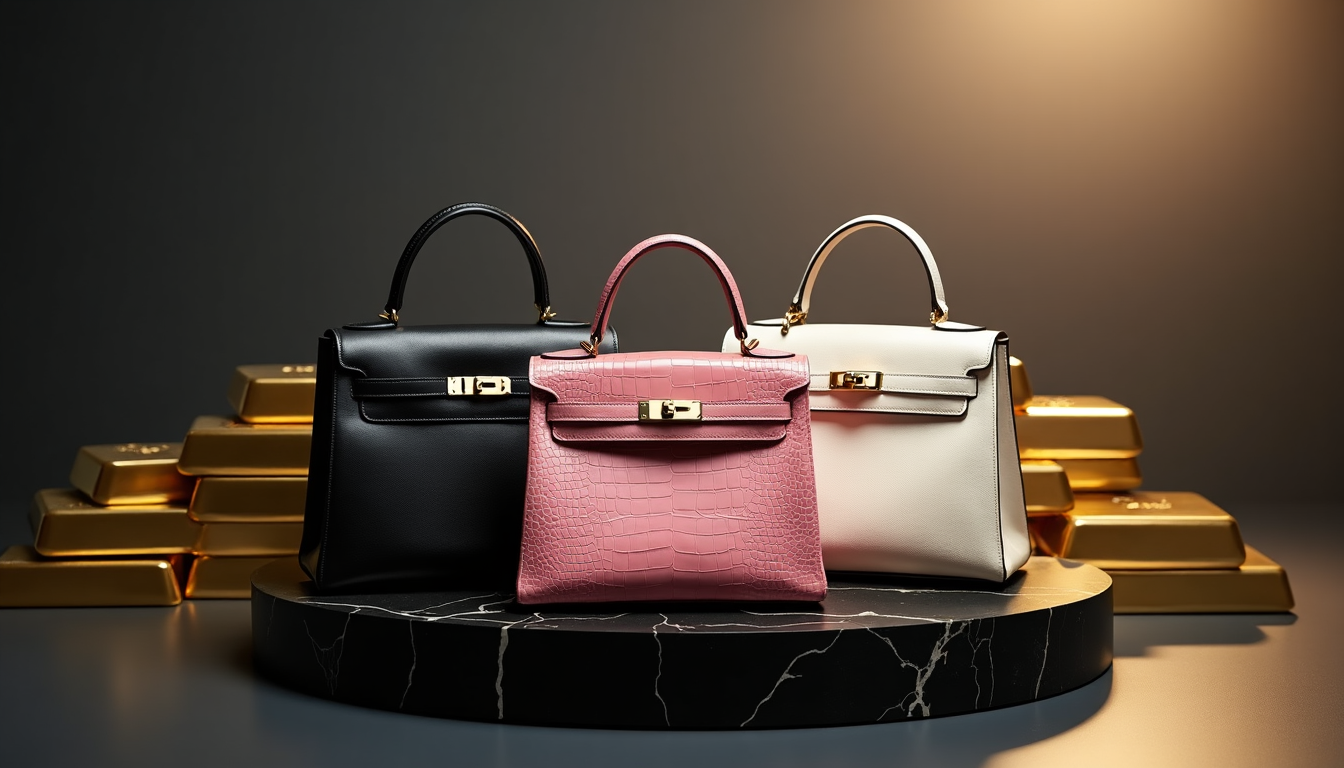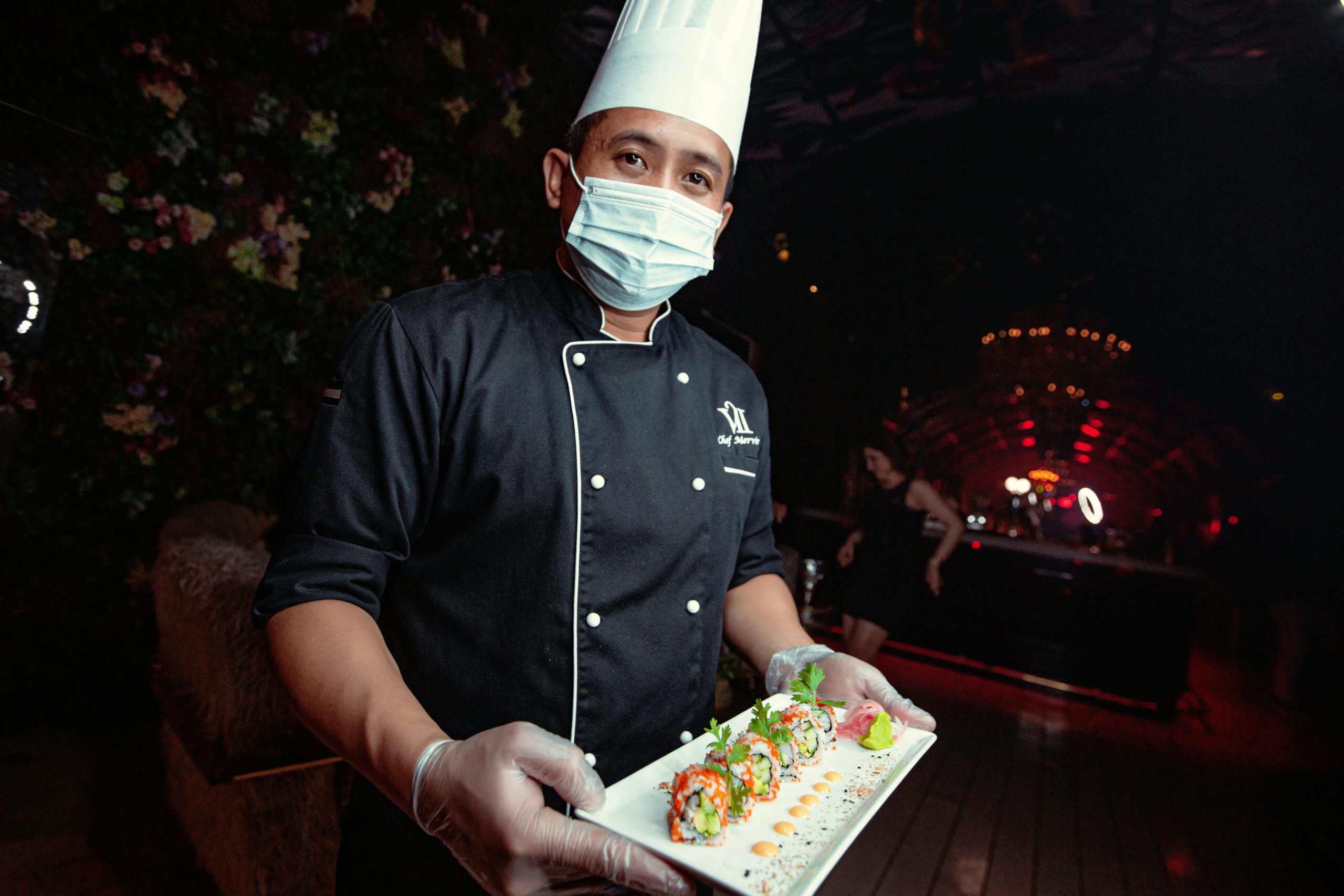Luxury handbags have reached mind-boggling prices today. Debbie Wingham’s Upcycled Egg Bag tops the list at $6.7 million, featuring 1,000 diamonds and upcycled materials. These prices might seem outrageous, but luxury handbags continue to prove themselves as solid investments.
Prestigious designer handbag brands consistently show their worth in the market. The Mouawad 1001 Nights Diamond Purse serves as proof of the luxury market’s potential, with its $3.8 million valuation and 4,517 diamonds. Traditional pieces have also made their mark – a pink exotic crocodile skin Hermès Birkin recently fetched $221,844 at auction.
Let’s dive into the factors behind these premium prices. We will look at the market-leading brands of 2025 and examine how these prestigious accessories outperform conventional investments consistently.
Understanding the World’s Most Expensive Handbags Market
The luxury handbag market shows amazing growth potential. Global market value could hit USD 51.00 billion by 2032. Asia-Pacific leads the way with a 37.30% market share.
Current market overview in 2025
Consumer priorities have changed a lot in the luxury handbag market of 2025. The U.S. market stands at USD 11.48 billion, which proves how strong mature markets remain. The European region serves as the life-blood of luxury retail and holds 34.33% of the global market share.
Specialty stores rule the distribution channels. They bring in about 85-90% of market revenue. The digital world opens new doors for growth, and online channels should grow at 8.6% CAGR.
Key players in luxury handbag manufacturing
Well-known luxury houses control the competitive market. Louis Vuitton, Hermès, Chanel, Gucci, and Prada lead the pack. Boutique luxury brands like Bottega Veneta and Celine have made their mark with minimalist designs and unique materials.
These brands work hard to keep their market positions strong. They focus on state-of-the-art designs and materials while building their digital presence to meet what consumers just need.
Price ranges and market segments
The market splits clearly into different price points and consumer groups. Women’s segment leads with 55-60% of market revenue. Manufacturers create products that fit different consumer needs, from everyday luxury to ultra-premium collections.
Price ranges vary by a lot across segments:
- Entry-level luxury: Available designer brands
- Mid-tier luxury: Well-known fashion houses
- Ultra-luxury: Exclusive limited editions and bespoke pieces
Millennials and Gen Z drive the market forward. They make up 83% of luxury growth. Working women’s population, with a global labor force participation rate of 47%, is a vital group that pushes market expansion.
Why Expensive Designer Handbags Outperform Gold
Studies show that the most expensive handbags consistently perform better than traditional investment assets. The Hermès Birkin bag has achieved an average annual appreciation of 14.2% in the last 35 years. This makes it a remarkable investment option.
Value appreciation analysis
Luxury handbags have shown remarkable stability in their appreciation rates. The Hermès Kelly bag’s value jumped 129% in the last decade. Gold only managed a modest 1.9% average annual return. A Birkin that’s managed to keep its condition can hold 80% to 100% of its original retail price within the same year of purchase.
Investment potential comparison
The numbers speak for themselves when we look at returns from different asset classes. The luxury handbag market delivered a 13% annual return from 2019 to 2022. These returns outperformed both gold and traditional investments. A rare Birkin could fetch anywhere from £20,000 to over £150,000 in the secondary market.
Market stability factors
Several key factors contribute to luxury handbags’ stability as an investment:
- Brand exclusivity and limited production runs
- Strong authentication processes through reputable platforms
- Growing demand from high-net-worth individuals
- Resilient secondary market performance
These elements have helped the market show remarkable resilience. The demand for second-hand bags has grown 20% month-on-month. We saw this strength at the time a Hermès Birkin sold for nearly USD 150,000 within hours of listing.
The investment outlook for expensive designer handbags remains reliable. Some models have seen value appreciation of up to 130%. While traditional investments fluctuate, luxury handbags have shown steady growth, especially during economic uncertainties. Sophisticated authentication processes and a growing network of reputable resale platforms provide detailed pricing data that strengthens the market’s stability.
Most Valuable Handbag Brands in 2025
French powerhouses lead the luxury handbag sector and dominate the global market in 2025. Louis Vuitton stands strong as the world’s most valuable luxury brand with a 4% rise in brand value to reach USD 129.80 billion.
Top 5 most expensive handbag brands
The luxury handbag brands show incredible growth:
- Louis Vuitton – Brand value: USD 129.80 billion
- Hermès – Brand value: USD 93.68 billion
- Chanel – Brand value: USD 60.15 billion
- Gucci – (Despite 9% decline from 2023)
- Dior – Brand value: USD 11.98 billion
Brand value analysis
We noticed Hermès showing exceptional performance with a 23% increase in brand value, which surpasses the luxury sector’s overall growth of 8%. The brand’s success comes from its exclusive product positioning and strong performance in the US and China markets.
Chanel, without doubt, keeps its prestigious position with an 8% increase in brand value. The brand’s sales will exceed USD 20.00 billion, thanks to its expansion plans and high-profile campaigns.
Market share and dominance
The top 10 luxury brands combined value reaches an impressive USD 357.00 billion. European region definitely holds the largest share, driven by high-profile social involvement and higher consumer spending.
LVMH shows remarkable strength by owning eight out of the top 20 global luxury brands. These brands have strong retention rates at 60% compared to other top 20 brands at 54%.
Asia-Pacific region plays a crucial role, as China, India, and Australia emerge as vital markets for value-added brands. We see Christian Dior, the most recognized brand in China, strengthening its market presence through retail investments and digital involvement.
Investment Strategies for Luxury Handbags
Smart investment strategies in luxury handbags start with a solid grasp of market authentication and preservation techniques. Your original focus should be on brands with proven track records. Handbags from 35-year-old fashion houses have shown returns of up to 38% annually.
Identifying investment-worthy pieces
We selected pieces with strong value retention potential to make successful handbag investments. The best investment criteria include:
- Brand heritage and reputation
- Limited production numbers
- Classic designs with enduring appeal
- Neutral colors for broader market appeal
- Pristine condition and complete documentation
Research shows high-net-worth women prefer alternative investments like handbags. They make investment decisions after getting a full picture. The average Chanel or Hermès handbag price grows by 12% annually.
Authentication and preservation
Authentication has evolved with services like Entrupy using AI technology to verify luxury items with nearly 100% accuracy. Traditional authentication methods need two or more specialists to get into each piece.
You retain control over your investment value through proper preservation. Collectors must store their pieces in climate-controlled conditions. Professional care services suggest:
- Regular maintenance checks
- Proper stuffing to maintain shape
- Protection from direct sunlight
- Storage in original dust bags and boxes
Resale market dynamics
Pre-loved luxury handbags grow faster than primary retail sales. The Hermès Birkin value jumped 500% in the last 35 years, showing a 14% annual growth.
Specific segments show remarkable strength in the resale market. Limited editions and rare pieces have achieved exceptional returns, with some models seeing value appreciation of up to 130%. Second-hand bags show resilience with a 20% month-on-month increase in demand.
Data Bridge projects the luxury handbag market will reach USD 42 billion by 2029. Younger collectors stimulate this growth, with Generation Z and millennials making up 72% of the luxury goods market. Sophisticated authentication processes and growing networks of reputable resale platforms provide detailed pricing data that strengthens market stability.
Future Predictions for Luxury Handbag Markets
Technology breakthroughs and green practices have altered the map of luxury handbags. The global market will reach USD 24.73 billion by 2028.
Emerging trends and technologies
The luxury handbag sector shows a fundamental change toward digital integration. We implemented RFID technology for authentication and tracking. Burberry led these breakthroughs in 2012. Prominent brands like Gucci and Louis Vuitton now use this technology to boost product authenticity.
Key emerging trends include:
- Green materials and eco-friendly production methods
- Augmented reality for virtual try-ons
- Smart features integration
- Personalization and customization options
Customization has gained much traction in developed regions like the Americas and Europe. Traditional craftsmanship remains vital while digital breakthroughs reshape the shopping experience. Augmented reality helps customers visualize bags before purchase.
Market growth projections
The global luxury handbag market will expand at a CAGR of 6.34% through 2028. The U.S. market expects growth at 4.7% CAGR from 2025 to 2030.
Regional growth patterns reveal strength in emerging markets:
- Europe holds 36% market share
- Asia-Pacific shows fastest growth potential
- Middle East displays increasing appetite for luxury assets
The online segment shows unique growth with 80% of European consumers buying online. E-commerce keeps evolving and creates new buying patterns that support market expansion.
Investment opportunities
The luxury handbag market offers compelling investment prospects despite market fluctuations. The second-hand luxury market shows remarkable potential. Some styles keep over 90% of retail value even after extensive use.
Investment-worthy segments include:
- Green luxury brands
- Digital-first retail platforms
- Emerging market expansion
- Limited edition collections
The Middle East emerges as a global wealth hub and offers significant opportunities for luxury handbag investments. Digital platforms bring greater price transparency and sophisticated pricing models.
The market shows strong potential in India, China, and New Zealand. These regions display increasing consumer interest in high-end fashion and digital participation. The satchel segment projects growth at 4.8% CAGR from 2025 to 2030 in the U.S. market.
Conclusion
Luxury handbags have become amazing investment tools in 2025. They outperform traditional assets like gold by a lot. Brand giants Louis Vuitton, Hermès, and Chanel keep growing stronger, and their brand values now reach all-time highs. These prestigious pieces give excellent returns. The Birkin bag’s value has grown at 14.2% yearly over 35 years.
Savvy investors need to master authentication, preservation, and brand selection to build strong luxury handbag portfolios. The market outlook stays positive, especially when you have growing regions like Asia-Pacific and the Middle East. New breakthroughs in AI-powered authentication and digital retail make luxury handbag investments more available and safer than before.
Green practices and digital breakthroughs will shape luxury handbags’ future. The second-hand market shows great potential – some styles keep over 90% of their retail value. This stability pairs with better authentication methods and expanding digital platforms. Luxury handbags remain solid investment choices that will last for years.





